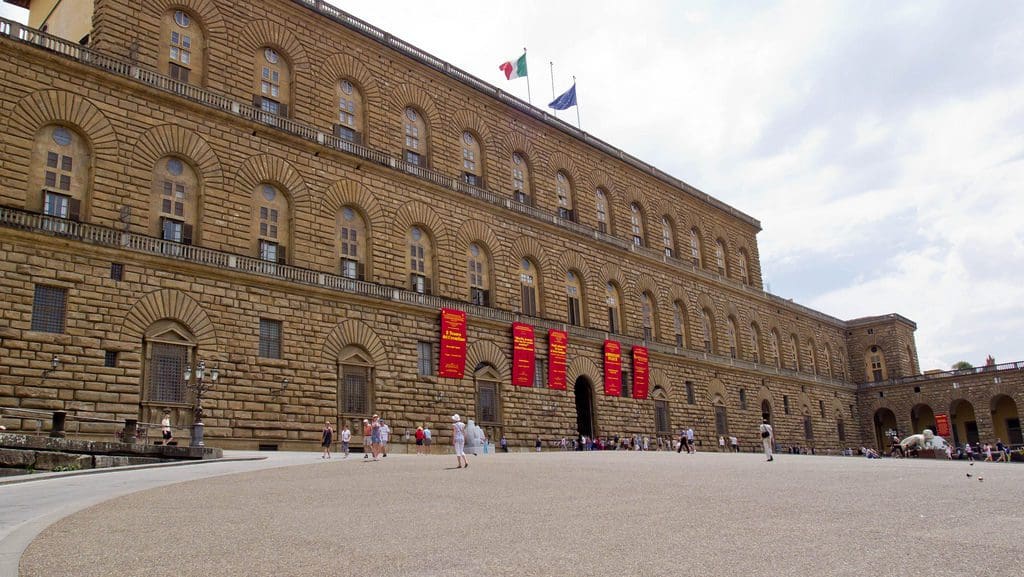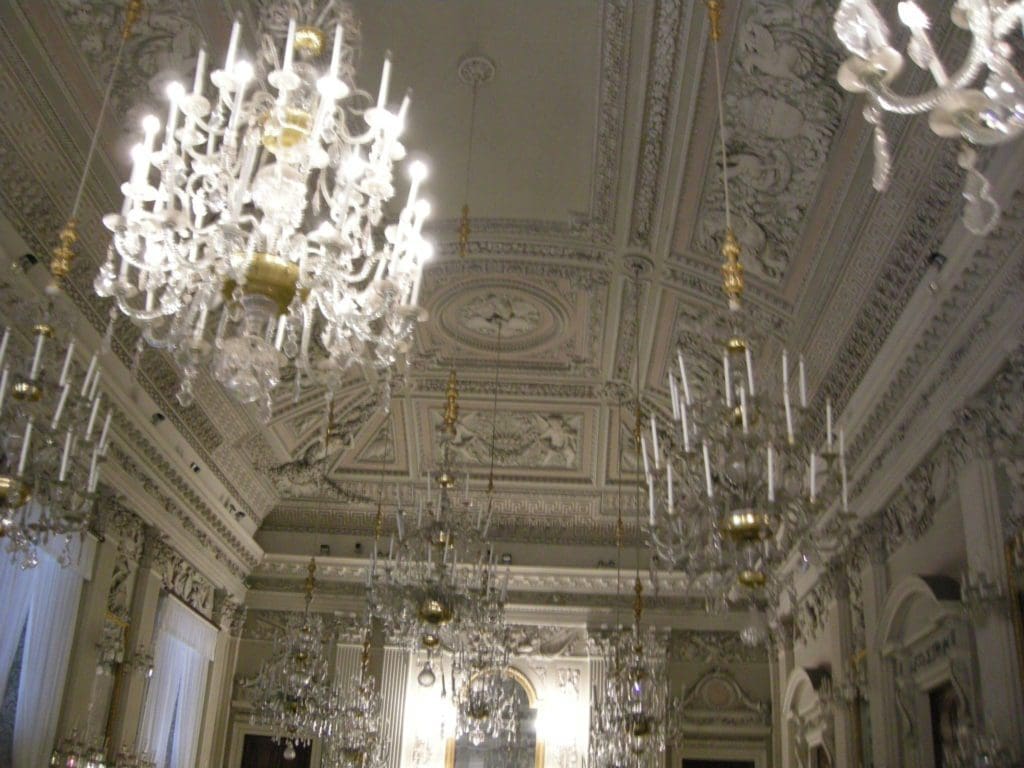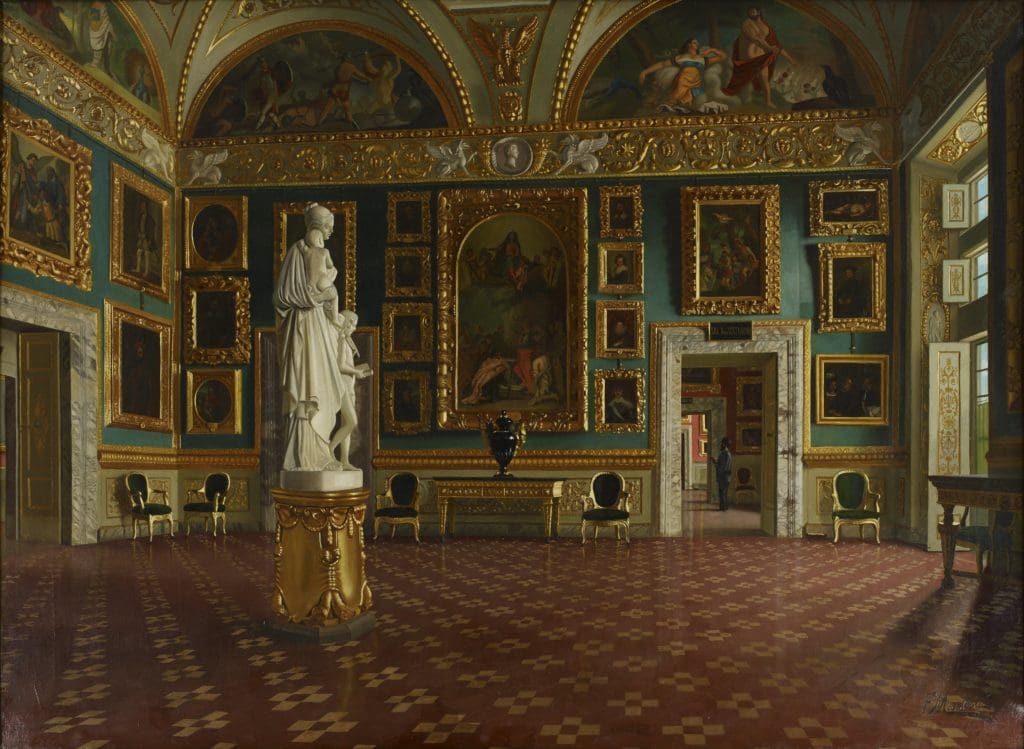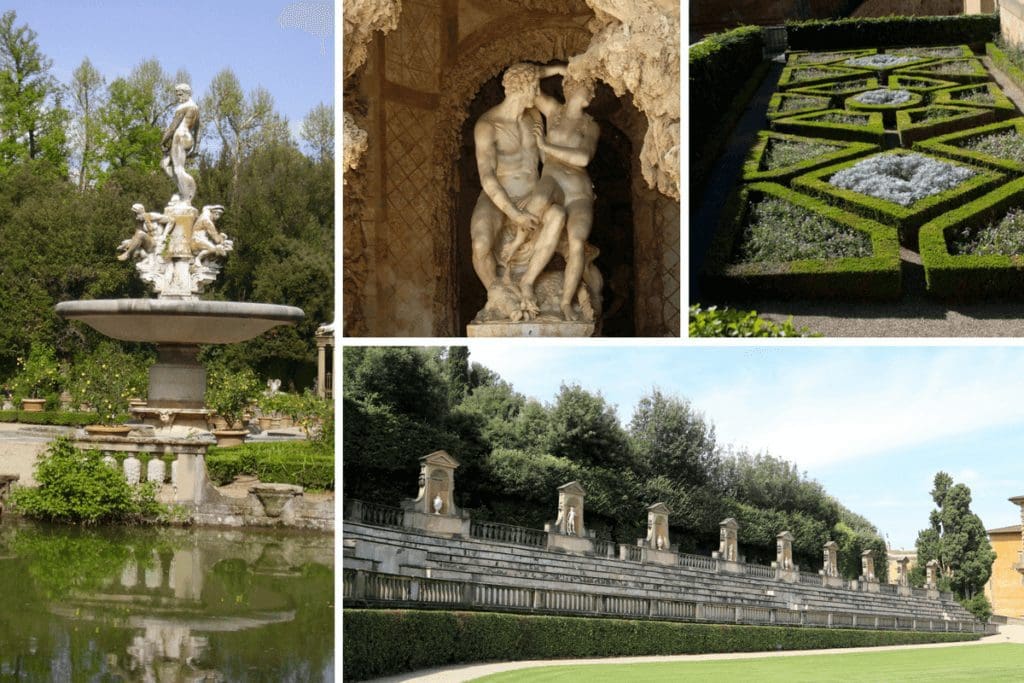
Florence, Italy is known as the birthplace of the Renaissance and is overflowing with centuries of history and unequaled art and architecture. The size of the magnificent terracotta-tiled Duomo is certain to take your breath and the many masterpieces of the Uffizi and Accademia Galleries will make you swoon. You may never tire of wandering the warren of narrow, cobbled streets of the oldest part of the city, but across the Ponte Vecchio in Oltrarno, which literally means “on the other side of the Arno,” there are treasures that you should not miss: the Pitti Palace and Boboli Gardens.
The Pitti Palace

The Palazzo Pitti was originally built in 1458 for the influential banker Luca Pitti. It’s thought that the project was directed by none other than Brunelleschi, who engineered the famous Duomo. About a century later, Cosimo I of the powerful Medici family bought the palace. He commissioned the Vasari Corridor, which connects the palace with the Uffizi across the river. To accommodate their family, the Grand Duke and his wife enlarged the palace, as did following generations of Medicis in order to have room for their royal courts. The result is an enormous palace that today houses eight museums.
The Royal Apartments showcase the styles of three different eras of ownership. The Baroque frescoed ceilings, gilded-inlaid work, and semi-precious stone cabinetry reflect the sumptuous lifestyle of the Medici dynasty (up to 1734). After the Medicis, the House of Lorraine took over the palace (mid-eighteenth to mid-nineteenth centuries) and redecorated with the prevailing tastes of Rococo stucco ceilings and hand-embroidered silk wall panels. Then for a brief period, King Victor Emmanuel II of Savoy lived in the Apartments. He renovated the opulent throne room to include carpet and red damask popular with the royal set in the mid-nineteenth century.

The most important of the eight museums in Pitti Palace is the Palatina Gallery, which houses works by old masters such as Raphael, Titian, Rubens, Van Dyck, and Caravaggio. The superb painting collection is displayed in the sixteenth-century Italian style of quadreria where the art covers the walls up to the ceiling and is not arranged by chronology or artistic school, but by size and color. Be sure to look up, also, as the frescoed ceilings are masterpieces themselves.
Other museums of Pitti Palace include the Porcelain Museum, the Treasury of the Grand Dukes, a Costume Gallery, a Gallery of Modern Art, and a Carriage Museum. You can easily spend hours immersed in the collections of the privileged art connoisseurs of the Renaissance, but be sure to save time for one of the most visited sites in the city – the beautiful Boboli Gardens.
Boboli Gardens

Eleonora di Toledo, wife of Cosimo I of the Medici family, had the garden built behind the Palazzo Pitti in 1549. She hired the greatest talents of the day to create a true giardino all’Italiana, with narrow paths lined by lush hedges leading to grottoes, fountains, and ponds. The Lorraine and Savoy families continued to enlarge the gardens with lovely meadows and extraordinary Roman and late-Renaissance statues that make the garden a veritable outdoor museum. Discover the picturesque amphitheater, the staircase leading to the Garden of the Knight, and innumerable other delights, all with stunning views of the center of Florence. The Boboli Gardens are a must-see in Florence.
Ticket Information
You’ll want to allow a full day to visit the Pitti Palace museums and the Boboli Gardens. As of May 2017, there are two ticket options: One ticket for the Pitti Palace (€13) that includes the Palatine Gallery, the Modern Art Gallery, the Fashion and Costume Museum and the Treasury of the Grand Dukes. A separate ticket for Boboli Gardens (€7) that includes the Porcelain Museum and the Bardini Garden. Travel Maestro tip: The first Sunday of each month is a free admission day.
If you plan to visit other Florence museums, consider the Firenzecard (€72). It offers 72 hours of priority (skip the line) admission to 72 museums in Florence, plus discounts at a host of local restaurants and tours.
To plan your trip to Florence, contact Covington’s Italy vacation specialists today.







Leave a Reply